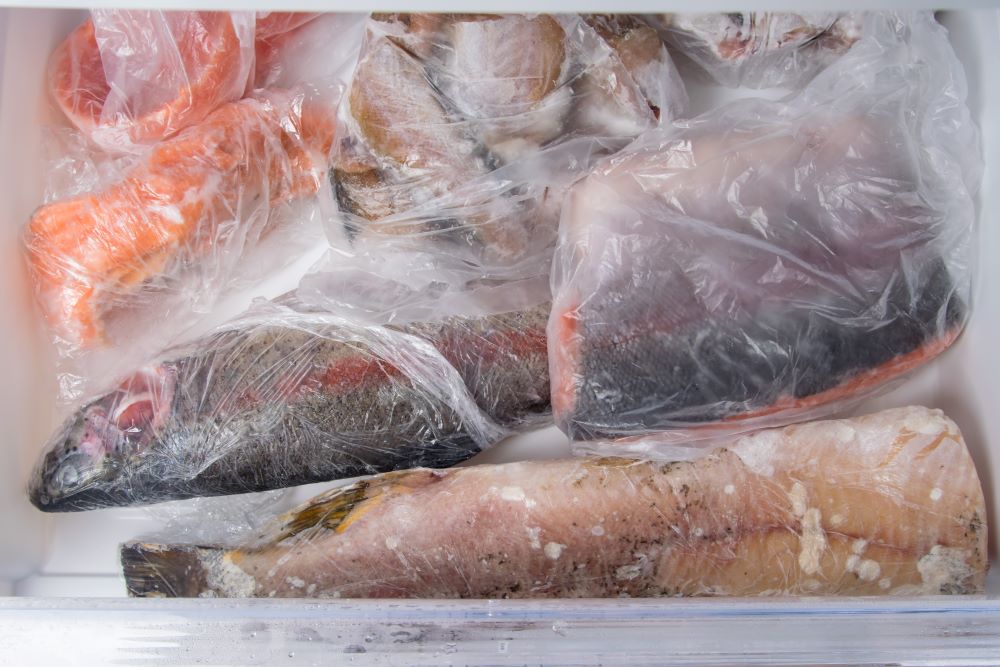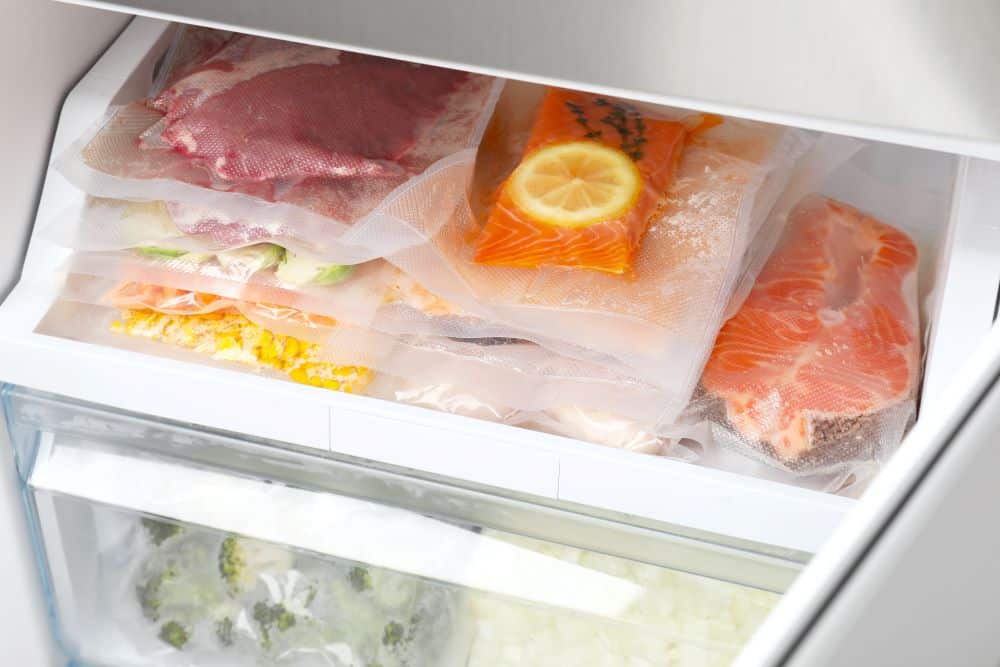How to refreeze fish safely? Cooked or raw fish can almost always be refrozen if you know how to do it correctly – and the key is how it was first defrosted.
If you know how to refreeze previously frozen fish correctly, you can save yourself a good deal of trouble if you have frozen fresh fish in the refrigerator that you won’t be able to cook soon. The fish might have been defrosted, but you already had another meal planned, or perhaps you are overserving yourself with fish.
The last thing you want to do is throw away frozen foods or waste food, but you also want to avoid handling food incorrectly with seafood.
Along with how to refreeze any fish you may have in the fridge at the moment, we’ll also discuss re-freezing fish issues.
Fish Arrives Unfrozen
The fish may still be salvageable if it arrives unfrozen. It is possible to refreeze fish that has been below 5°C for a short period, less than 2 hours.
Normally, we recommend discarding fish if its temperature exceeds 5°C. It is okay to refreeze as long as the temperature didn’t rise above 5°C. Even though we have consumed many kilos of fish that are 5°C and re-frozen, we have never experienced any harmful effects.
The majority of customers will not take their fish’s temperature. The rule of thumb is, ‘If it seems cold to the touch, it’s okay to refreeze’. It is common knowledge among customers that cold to the touch means cold. In addition, frozen meat or seafood accidentally defrosted but not brought to room temperature can be frozen again. They do not consider it a loss. Though it is widely advised that defrosted products should never be refrozen, some people believe otherwise.
Without spending excessive amounts to keep the fish frozen, we strive to deliver the fish frozen to you. We will refund you in full if you are dissatisfied with the temperature at which your order arrives. As you can imagine, this does not happen very often, or else we wouldn’t be able to stay in the industry.
Texture and flavour loss
The texture and flavour will be slightly diminished, but the effects will be very subtle, often unnoticeable to most people. It would be clear to most people if the fish had been at 5°C for many hours and soaked before being refrozen, as the reduction would be evident. In the case of a partially defrosted product without any runoff, it would be difficult to distinguish the taste difference.
If you want to test this yourself, you can do so easily. Take two slices of frozen fish from the packet. Let one defrost overnight in the fridge, and then freeze it again. Next, cook both dishes and share with a companion. Is there a difference in taste between you and your companion?
How to Safely Refreeze Seafood
When thawed in the refrigerator, both cooked fish and raw meat can be frozen and refrozen without risking contamination. The following caveats apply, you should refreeze your fish as soon as it thaws, especially if you have let it sit out for two hours or more, or when the temperature exceeds 32°C.
If you want to refreeze dinner tonight, you shouldn’t have any issues with that rule. However, when it comes to fish served at parties, refreeze leftovers only if they are within these time frames. If you believe you have gone beyond these time limits, you should not consume leftover fish.
Even though fish is costly, and throwing it away isn’t pleasant, it is important to prevent food poisoning for yourself and your family members. Food should always be handled with extreme care.
Refreezing
Defrosting and losing texture and flavour are things we would prefer to avoid. Nevertheless, if the defrosting itself is going to be minimal, customer concerns are always addressed.
We always strive to conclude this conversation pleasantly, and we are happy to refund you in full if you’re not satisfied. However, some customers will not accept it. There are perhaps 10 interactions out of 100 where the customer quotes us, “Do not refreeze defrosted products. Even slightly thawed fish is not suitable.” In this case, we provide a refund.
We refunded 20% of the value of most of the other conversations as a recognition of the shortcomings in the delivery, but this did not significantly affect the value.
What is the reason virtually each frozen food package warns against refreezing defrosted food? This is to provide useful advice to the public at large.
If you leave a defrosted product at room temperature for an extended time, you could suffer serious health consequences. Particularly if it was then refrozen without showing any signs of defrosting. Approximately one-quarter of the population may be unaware of this threat. It is critical to emphasize that “Defrosted food should never be refrozen” to protect them from potentially dangerous food that has been defrosted or refrozen.
The food processing industry is also known for defrosting and refreezing regularly. Defrosting takes place in a controlled environment, where the product is kept chilled. Food shelves in supermarkets would be bare of a variety of common foods if this procedure were banned.







